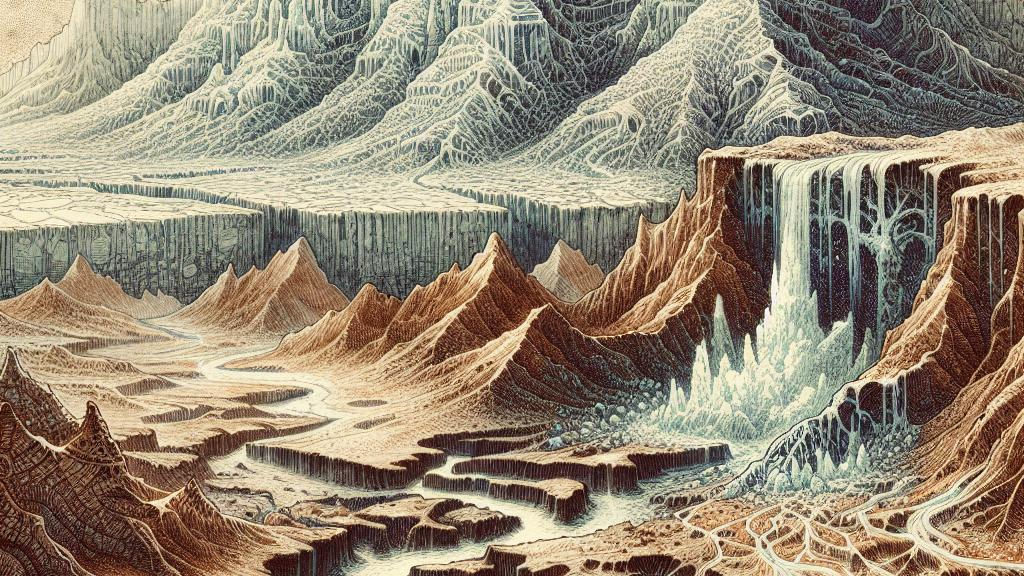The Flow of Water on Icy Mars: Insights from Carbon Dioxide Dynamics
Overview
- Mars was once a dynamic planet with rivers and lakes flourishing beneath ice.
- The collapse of carbon dioxide allowed for significant melting of subsurface water.
- Recent research opens exciting new doors to understanding the Martian hydrosphere.

Exploring the Mysteries of Ancient Mars
Picture Mars long ago; it was a world alive with rivers cascading beneath thick ice sheets and large lakes with depths rivaling the Mediterranean. Recent studies highlight that around 3.6 billion years ago, Mars underwent a drastic transformation. Carbon dioxide began to freeze out of the thin atmosphere and accumulated atop the polar ice, creating a formidable barrier that trapped heat below. This unique setup triggered a remarkable event: massive volumes of water melted beneath the surface and flowed freely, carving out the rugged valleys and intricate channels that we observe today. These newfound landscapes serve as a fascinating record, painting a picture of a time when Mars could have supported potential life forms in an Earth-like environment.
The Key Role of Carbon Dioxide in Water Dynamics
At the heart of this discovery lies Peter Buhler’s groundbreaking carbon dioxide model, which provides compelling insights into the interactions between Martian regolith—the surface dust and rocks—and the atmosphere. Buhler's model reveals that rather than relying solely on atmospheric conditions, the intricate exchanges between regolith and polar ice are crucial for water flow. For instance, during specific climatic phases, when Mars’s tilt allows more sunlight to reach the poles, carbon dioxide deposits melt, significantly affecting the water dynamics. NASA’s Curiosity rover, on an exploratory mission through the Gediz Vallis channel, has unveiled evidence suggesting that liquid water may have persisted for far longer than once believed. This exciting finding challenges older assumptions and enriches our understanding of how the Martian climate has evolved over millions of years.
Broader Implications for Mars Research and Beyond
With each new piece of data, we unearth more about Mars, piquing interest in the potential for past life and the evolution of celestial bodies. Each discovery—be it the interplay of carbon dioxide and ice or the findings from Curiosity—paints a richer narrative of Mars’ geological history. Moreover, comparisons can be made with subglacial rivers in places like Greenland, showcasing that complex water systems exist in diverse environments. Such parallels not only enhance our understanding of Earth but evoke questions about the adaptability of life on other planets. As scientists continue to investigate these captivating landscapes, we inch closer to unlocking the secrets of Mars, highlighting its once habitable conditions and inspiring future explorations aimed at uncovering its deep-rooted mysteries.

Loading...